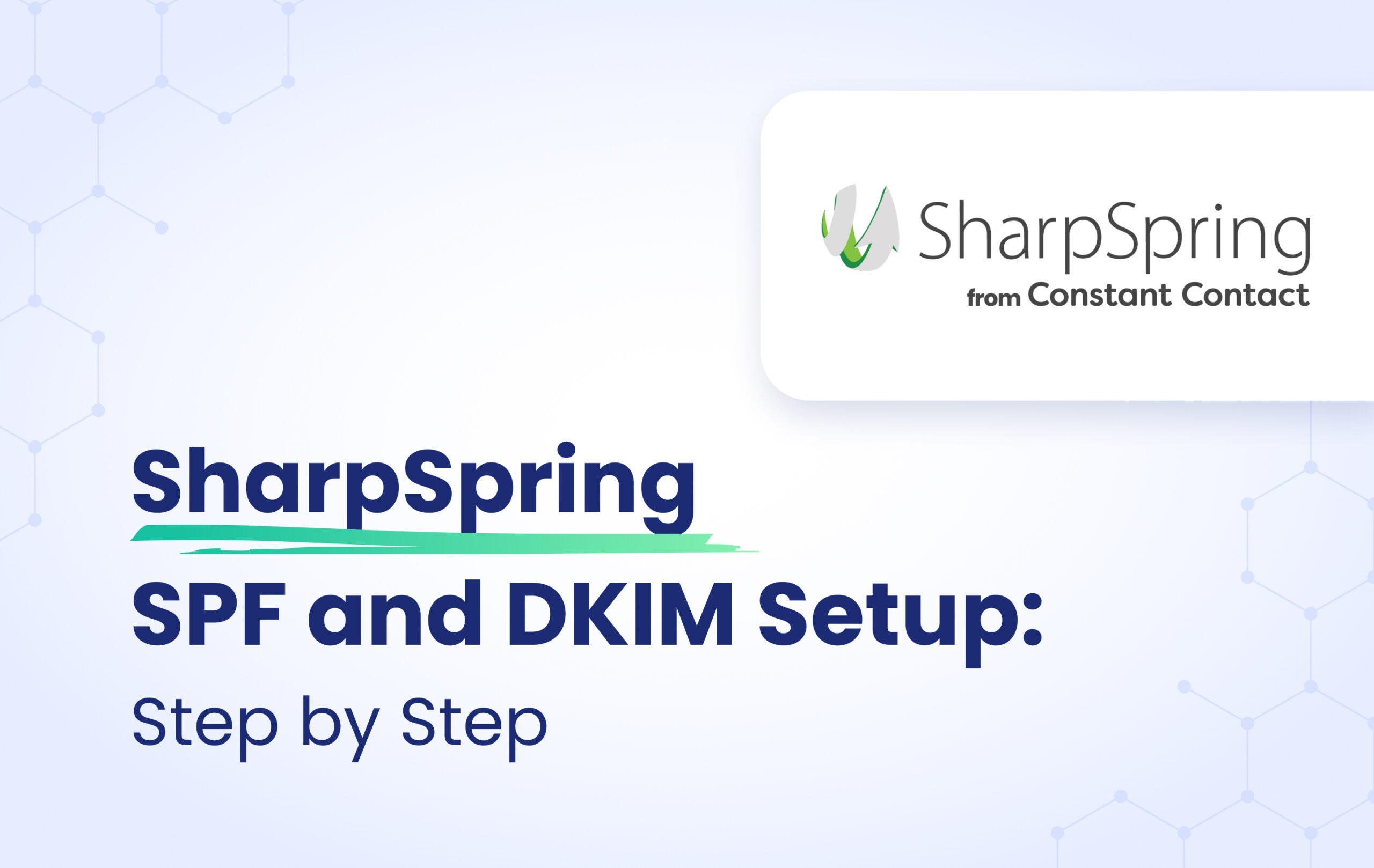This instructional article will demonstrate the SharpSpring configuration process of Sender Policy Framework (SPF), DomainKeys Identified Mail (DKIM) Signatures to ensure SharpSpring passes the DMARC alignment check and eliminate spam from your domain and increase security.
The SPF record identifies the mail servers and domains that are allowed to send email on behalf of your domain. The DKIM record, on the other hand, is a specially formatted DNS TXT record that stores the public key the receiving mail server will use to verify a message’s signature. These email authentication methods will be used to prove to ISPs and mail services that senders are truly authorized to send email from a particular domain and are a way of verifying your email sending server is sending emails through your domain.
The process of configuring SPF and DKIM
In order to configure SharpSpring on your domain and implement SPF and DKIM, you need to add 5 CNAME records.
Please follow these steps:
For each CNAME record mentioned above, please add the CNAME records separately in your DNS zone:
- Name: em
Target: em.v11153411c308456984.e.marketingautomation.services
- Name: s1._domainkey
Target: sg1.v11153411.c308456984.e.marketingautomation.services
- Name: s2._domainkey
Target: sg2v11153411c308456984.e.marketingautomation.services
- Name: link
Target: link.v11153411.308456984 e.marketingautomation.services
- Name: owner
Target: owner.v11153411.c308456984.e.marketingautomation.services
Screenshots above will show you the example of the CNAME records. We’ll be using CloudFlare for this example.
Important Note: please make sure to disable the Proxy Status and let it remain on DNS Only.
Congratulations, you now successfully authenticated your outgoing mail stream from SharpSpring with SPF and DKIM.
Important note: If the provider recommends publishing also a DMARC record, there’s no need to do so if you already have a DMARC record in place, as each domain can only have one DMARC record.


